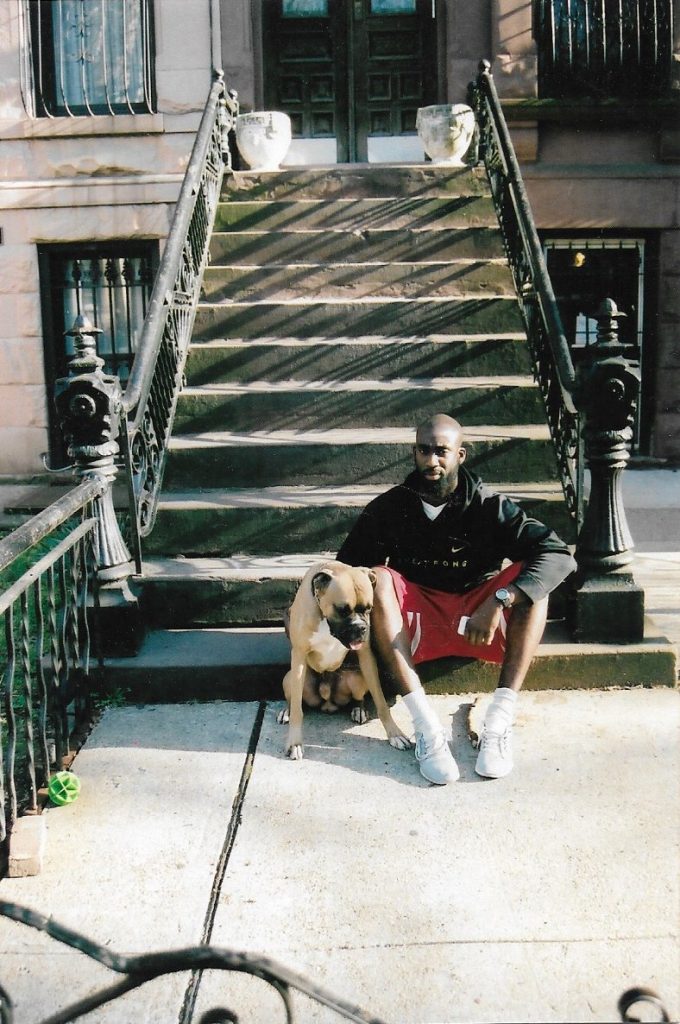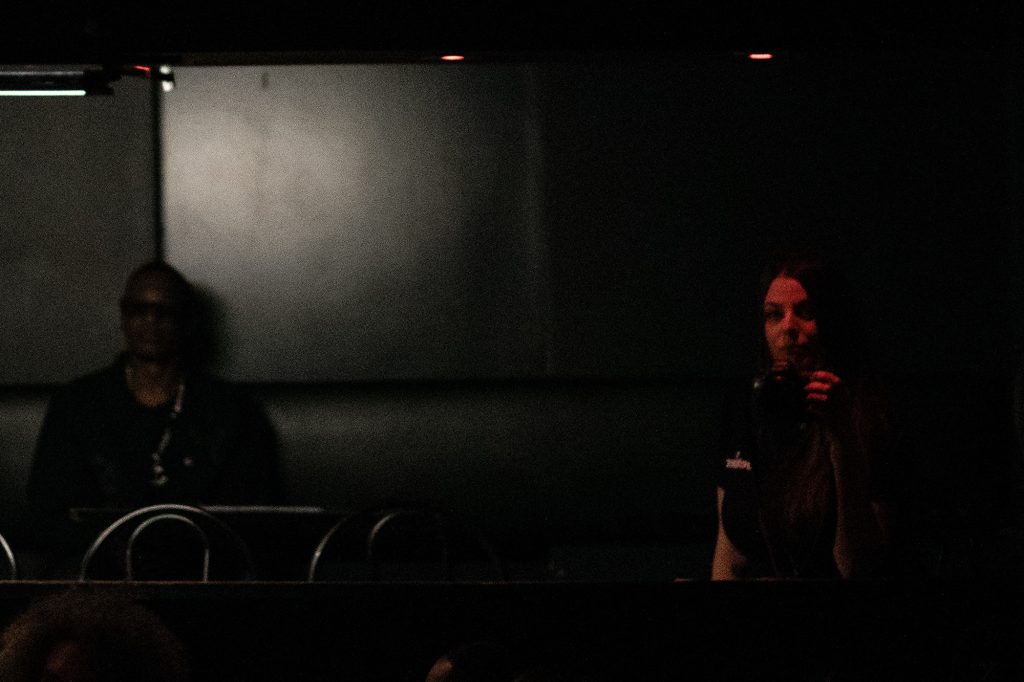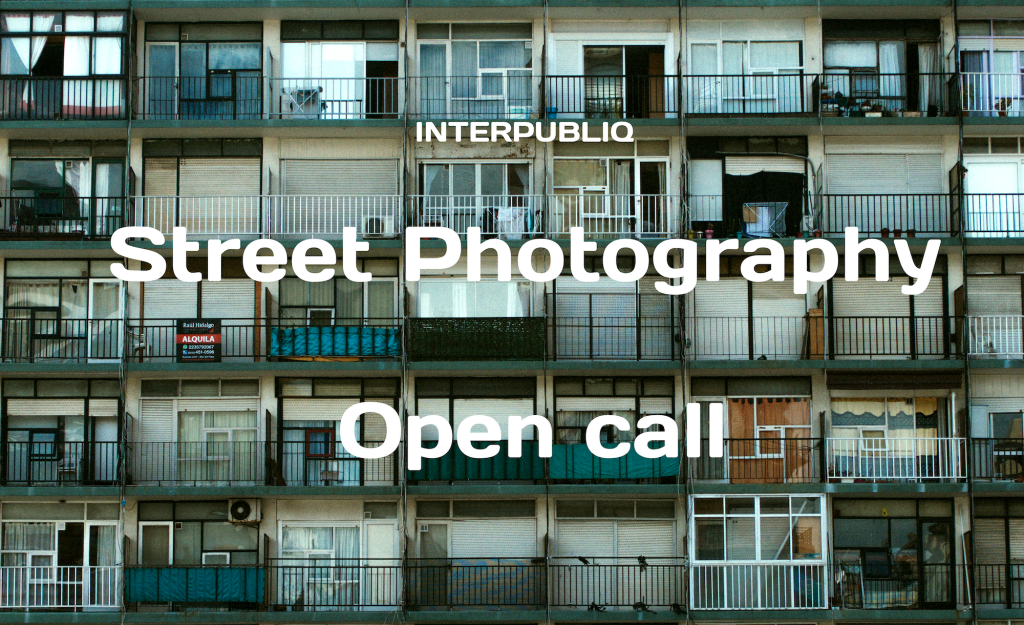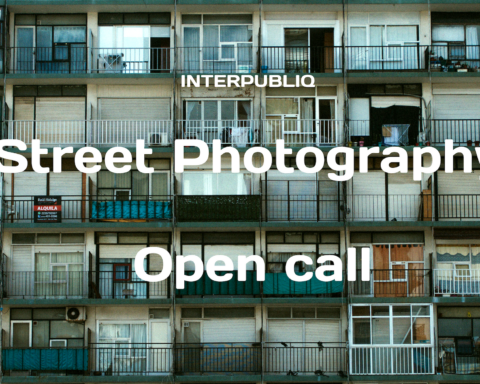Alexandra Chrysohoidis is a Greek-American photographer and visual artist based in Los Angeles, CA. With a BFA in Photography from Parsons The New School for Design, her background is design and concept based.
You started photography as a way to capture your surroundings, especially people. How has your approach to documenting people evolved over time, and what aspects of human nature intrigue you the most?
I was raised watching my artist mom and sister, who both have a good hand at painting and drawing. I don’t, but I had this desire to explore and express myself creatively, so I leaned into photography. I started taking pictures of my friends and I in Athens, Greece where I grew up. I would document us at school, out, in the streets, in the clubs, on the islands. We had a lot of freedom and where we didn’t have freedom, we tested the limits. The most rebellious and exhilarating memory was breaking into a train yard to capture the graffiti artists mid throw up. My approach to documenting people over time has evolved in a few ways- where I was fearful, I am now fearless. Where I was daring, I am now more strategic. Where I was vocal, I am now observant. Where I was quiet, now I am more assertive. Over time I have become more intentional. If it aligns with me, I will connect. I try not to do things just to do it, unless I feel called to do so. The main purpose for me is to create captivating work that I enjoy or that I think has a larger purpose in it’s message. My curiosity of the human condition is the main driver of any work I make. For me that condition can include psychological aspects, the ego, consciousness, physical form. The aspects of human nature that intrigue me can be aesthetic- in the conventional and unconventional. More importantly though, someone’s energy and mind intrigue me. The unique way someone operates. The unseen thoughts and feelings of someone and how I can capture that. Whether it’s through eye contact, an awkward movement or charismatic smile- someone’s essence is what I like to capture.
How did your experience at Parsons, where you explored a variety of disciplines like animation, cinema, and the philosophy of color, influence your approach to photography? Did these explorations help shape your style?
My experience at Parsons was instrumental to my foundation and development in finding myself as a creative person/artist. Before attending Parsons I didn’t know anything about photography. My background in the arts began in music. I played classical violin. Other than how it made me feel to look at and take photographs, I knew very little. I entered an institution where artists and creatives like James Baldwin, Jack Kerouac, Richard Avedon, Steven Meisel, Henry Belafonte, John Cage, Tom Ford, Donna Karan came out of. I had a lot of energy around me and A LOT to learn. I still do- it stimulates and drives me everyday. I was able to explore an abundance of information, artists, peers and resources that might not be accessible all in one place otherwise. Being surrounded by so many gifted people who knew their love and intentions for art, taught me to honor photography as a craft. Different avenues influenced my approach by allowing me to be inspired. To find ways to translate these thoughts into visual motifs, to allow me the freedom to discover and integrate. Freedom is very important to me, I do not like to box myself in. But learning this craft from an academic perspective strengthened everything about me and my artistic exploration by giving me knowledge. Other people have thought about the same things I have, and I was able to learn from them, dive deep and branch off from there in my own style and methods. I am still learning to express myself creatively, my subjects are just vehicles for those concepts, symbols and feelings. Sometimes my pictures are projections of how I feel inside. Sometimes my pictures are so I can escape how I feel inside. Above all, I was led there subconsciously. I didn’t know why or how, but going abroad to New York City to learn about art and pursue photography was calling me. So I followed the calling.
How does photography inform and influence other parts of your creative practice & lifestyle?
Photography informs other aspects of my life in many ways- how I see, how I feel, how I communicate, how I experience things. Photographs are an extension of me, they tie me to this earth. They connect me with others. It’s my meditation. Photography makes me more observant, meticulous, perceptive and strategic. In everyday life, I embrace how my surroundings speak to me. Whether it’s clusters of color that I notice, repetitive shapes or messaging. I like curating visual narratives, provoking discourse. I seek to add deeper meaning to things, it stimulates a mental search. When I go somewhere, I actively want to capture the memories and produce an image, a story. When I watch a movie, Im noticing things like light and composition. When I sleep, I am an avid dreamer. I see and experience things nightly. I love being this way. Imagery and photography also influences a part of my life that is more mental or surreal. I have been in spiritual development for the past ten years and tarot cards are a main conduit for my psychic ability of clairaudience. Tarot cards are cards with pictures and symbols. Clairaudience is “the supposed faculty of perceiving, as if by hearing, what is inaudible.” In other words visuals can trigger other senses for me and incite connection. Analyzing pictures, symbols and colors are all part of an experience in connecting with someone on a different plane or through a different modality. These “psychic abilities” pushed me to explore photography/visuals in a more experimental way as well- sometimes with an intention of capturing or depicting the unseen like spirits, or the unseen like someone’s thoughts or feelings. One year early September, I went to now One World Trade to see if I could capture any ‘spirits’ or orbs. I saw a skull in the clouds reflected on the building. So, the integration of photography and spirituality definitely influences my creative expression and discourse around how I see the world. I don’t have one without the other. This essentially led me down a path of honing in on surrealism.
You currently work in the sphere of comedy, how do you capture moments, what connections do you make? What challenges are presented? How do you incorporate this sense of unpredictability and spontaneity into your photography, and what challenges does that present?
Comedy is a genre of performance and entertainment that I have been documenting for the past year and a half. Specifically stand up comedy shows. There are so many aspects to it that encapsulate you- the energy of the performance, the synergy between the comic and audience, the belief and conviction of the jokes, body language, reactions, the stage or venue. There are many variables and they all play a part in creating photographs. The comic is known as the fool archetype, the clown, the jester. Someone that presents funny stories, humorous references or concepts guised as jokes to provide you an experience. Every comic or show I have worked with has different styles, processes, intentions, and expectations on and off stage so that provides variety for me that I enjoy. It challenges me to shift, learn and adapt while trying to remain consistent in my style. Showcasing the performer, highlighting peak moments and providing continuity is my main objective when creating the photograph. I want the viewer to be as immersed in the moment as I am. The unpredictability of a performance and freezing the moment in time is the adrenaline for me. Unusual perspectives, intense gazes, silent slivers amongst the loud, being interactive or being the observer, all exhilarate me. Challenges can vary. They can be more technical like, getting the proper exposure in dark clubs or nailing sharp focus while someone is animated. Moral challenges can be presented like wanting to show the truth of a moment that might not be as flattering or is contrived. My main challenge to show you what happened in an intriguing way. To create a space for compelling moments and creative images. To empower. These challenges led me to research different styles of performance photography. Like I mentioned my background started in music so, I began by studying images of Jazz musicians. Analyzing the capture of energy, dynamic movements, stillness, mood, imperfections, reactions, perspective, composition, lighting. I am always pushing myself for better and more. How can I reignite inspiration? How can I capture authenticity? How can I get closer? How can I immerse myself? How can I eliminate myself? How can I connect with my subject that brings out something unique? How can I change the tone from the stage persona to something more true? These are all things that I think about.
You work with both street/documentary photography and conceptual studio work. How do you navigate blending these two distinct styles, and what does this experimentation reveal to you about your craft?
My academic training was in conceptual art but I started taking pictures on an Olympus Stylus digital point and shoot (and later adopting my mom’s 35mm Minolta) around 2006. Documenting my life and my friends, we found ourselves in an underground scene of hip hop, graffiti and street life in Athens. I was cultivating relationships outside of school, (considering I was 16 at the time) and I would take pictures of aspiring artists. Another memorable and exhilarating experience was taking pictures of hip-hop group MOP in 2007. I wasn’t hired to or anything, but we were front row at their concert in a small garage style space holding maybe 200 people. And these were low grade pictures, not anything professional. But I cherish those shots so much knowing their influence in hip-hop. In a way, photography can be a possession of moments. Major event or not. So, that style of documentary for me is adrenaline. So is street style. I went out during the George Floyd protests in Los Angeles in 2020 and just captured my surroundings on 35mm film. No production, no influence on my part. Unpredictable. I had to see what was happening. Same with the protests in 2008 in Athens, Greece. It’s adrenaline, exciting, sometimes rebellious. The speed, action and the unknown. I like the meditative aspect of documenting the streets or the outdoors. I am present, I am not separate, I am apart of the environment. Sometimes I want the influence of my presence documented in the subject, sometimes I don’t. For me, documenting my surroundings instigates a discourse without me having to add a concept to it or stylize in any way. Unless, I am creating a series with a common theme. Such as helicopters for example. When I first moved to Los Angeles I noticed the constant choppers and documented them for a while. Working in comedy makes sense for me because comedy shows are actually the perfect fusion of documentary and conceptual [studio] work for me, because it’s unpredictable and I am not in control of the environment, but I am trying to capture the essence, and work collaboratively to set a tone and create a narrative. We’re exhibiting entertainment. I use flash for portraits so that can be an incorporation of studio style in a sense as well.
Can you tell us about a memorable project from your street style? Where are you at now with it?
I moved to Los Angeles on January 1, 2019. It wasn’t too long before the pandemic era where protests and marches began happening. Like I mentioned, I went out during the BLM protests for George Floyd in May 2020 which I will include below. I got the film developed in 2023 and I noticed something strange. They were double exposures. But the exposures underneath were shots I took in upstate New York in 2017. Three years prior. This seemed really strange to me because how was this possible? The roll of film didn’t unravel and begin to be shot on again. And that’s not even the way double exposure works. And I couldn’t have reused that roll because there would have been no tail to pull and load into the camera. My camera ravels it fully back into the canister. So, that unusual technical part of it and also capturing such a major event in history in a major city such as LA was probably one of my more memorable street projects with my camera. It’s not just the pictures, it’s not just the experience. It’s the discourse and conversation around high intensity events and themes happening in our world. Now, I go on photo walks mostly in my area of West Hollywood/Hollywood. I will go out looking for people, places or things that intrigue me or jar me. It’s my escape. I can’t be available for anything else, I’m out shooting. I’m in my own world. I’m out gaining inspiration. I’m out deliberately getting out of my head. I’m decompressing. Sometimes I just stop and take in the beauty. There are so many textures, colors, lights, shadows, contrasting things and moments happening in this city. For me, this style of documenting is for my own memory archival as well as wanting to share and show others what’s happening from my perspective. Sometimes with opinion, sometimes not.
You’re in the process of blending styles and finding your voice in photography. How do you see your voice evolving, and what does this journey of self-discovery look like for you as an artist?
The way I’m looking to evolve is to get more personal. In my own work and with others. I have started capturing more portraits in studio and on location. So far I am enjoying cultivating connections and working collaboratively to create fun or thought provoking imagery. Right now my desire/goal is celebrity portraiture and photographic/video storytelling and I’ve currently emerged in the scene of comedy doing that. It’s really fun! I anticipate the journey and in general, I am open to seeing where I head towards next. I am open to any project that that I can learn from that aligns with me or that I think I can do a good job at. For example I recently did an interior project of a new cannabis consumption lounge in West Hollywood. It was a huge challenge but I enjoyed the result. There are many things I want for the future. I want to work with more people to collaborate on stylized shoots. I want to work more closely with artists to execute their visions. I’d love to explore other industries such as music. I want to work on some personal projects as well. In the future, I see myself telling stories in video/cinema format too. On a personal level, a nightmarish feeling for me is not having my camera on me and missing the shot, so I just bought a used Sony a6000 to carry on me at all times. It’s more accessible for me daily than my Mark IV and it helps me take more photographs for myself instead of just for clients. Again, for creative series, memory archival and meditation/to get out of my head. I was gifted a Papershoot camera and a Fujifilm Instax camera. I’m always shifting gears and experimenting. I love playing around with different mediums and formats. This is where I maybe see myself as an “artist”. That word is a huge conversation instigator that I love and can possibly argue. I’m not sure I’m always an artist. I know other creators that have a need to create to survive. Artistry ranges and maybe that is where we should leave off and pick up for next time! Thank you so much for having me! Roast Battle, 2024 Self Portraits at Roast Battle 2024 Los Angeles May/June 2020 Mystery Double Exposure, Los Angeles May 2020 Choppers, 2020 Lauren Michaels host of Ego Death at The Hollywood Improv, 2024 Chris Distefano at The Wiltern, 2024
































